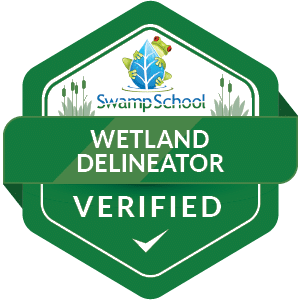Biden administration focuses on making changes, and canceling two environmental rollbacks under former President Donald Trump is another plan of action. Since the Administration finalized the changes under Trump during the last weeks in office, there was little time to make a substantial impact.
One of the rules empowered the officials to deny protections for endangered species in areas that could have a significant economic benefit, particularly more energy development and other activities. The other rule was referred to as the definition of “habitat,” or more precisely, the land and water areas that can be declared as habitat for imperiled plants and animals.
The most recent developments indicate that the Environmentalists welcome the actions taken by the Biden administration. Namely, there are years of battle: there is a tug-of-war between Democratic and Republican administrations about the implementation of the Endangered Species Act, passed by Congress in 1973.
The U.S. Fish and Wildlife Service and National Marine Fisheries Service made an extensive effort with the Biden administration and suggested to dismiss two Trump-era rules. Namely, the proposal was to undo the regulations that favored industry development to the detriment of the environment. Both, Industry groups and Republicans in Congress consider the Endangered Species Act as an obstruction to the development of the economy. On the one side, it is undeniable that lands and waters are crucial for the survival of the vulnerable species, even though the designation limits mining, oil drilling, and further development.
The discussion lasted a long time, and the Environmentalists, supported by the Democrats, salute the landmark law and attribute credit for rescuing the American crocodile, gray wolf, and bald eagle. Republicans, on the other side, loudly criticize this law for entangling in lawsuits and land restrictions, as a result of which relatively few species are off the list.
Trump administration weakened the law’s regulations, and industry groups were satisfied with the economic development. However, changes in the Administration mean changes in the rules. Biden administration referred to adopting the practices that federal wildlife agencies rejected several months ago. Nonetheless, after evaluating and canceling Trump’s rules, Biden administration officials concluded that previous changes limited the government’s advancement of conservation.
Parks Shannon Estenoz, Assistant Secretary for Fish and Wildlife, stated that by cutting the Trump-era rules, the endangered species law would be “into alignment with its original intent and purpose — protecting and recovering America’s biological heritage for future generations.”
Republican legislators, however, did not remain indebted. The ranking GOP member of the House Natural Resources Committee, Arkansas Rep. Bruce Westerman, considers Tuesday’s move a “tone-deaf” reversal. Republicans have an intention to introduce introducing legislation to make the Trump rules permanent, which is highly unlikely to be realized while Democrats remain in control of the House and Senate.
The two rules which are subject to the discussion came in response to a 2018 U.S. Supreme Court ruling. Namely, the main focus was on the dusky gopher frog – a highly endangered Southern frog when a unanimous court reproached the government for its designation of “critical habitat” for this endangered species that survives in only several ponds in Mississippi.
What led to this issue was the lawsuit from a timber company, Weyerhaeuser, regarding land in Louisiana that was appointed as critical if the endangered frogs returned there at some point in the future. Trump administration indicated that these changes untie the hands of local governments when they want to build things that will benefit many citizens, such as schools and hospitals. The abovementioned rules allowed potential exemptions to a great extent, including leases and permits to enable energy development, grazing, recreation, logging, and other commercial uses of public lands from private companies.
Noah Greenwald with the Center for Biological Diversity is one of the Environmentalists who encouraged the Biden Administration to reverse Trump’s rules. Noah stated: ”You really can’t save endangered species without protecting the places they live or need to live.”
Lesser prairie chicken, rare dunes sagebrush lizard, and rusty patched bumblebee are a few of the animals potentially affected by the changes ruled by the Trump Administration.
An attorney for the environmental advocacy group EarthJustice, Leinā‘ala L. Ley, stated that further action to revoke the 2019 rule is more than necessary. “Today, the Biden administration took a good first step towards restoring bedrock Endangered Species Act protections to our nation’s imperiled plants and wildlife,” Ley said. “But the Administration needs to work quickly to rescind all the Trump-era rules. The extinction crisis is happening now, not sometime in the distant future. What the Biden administration does now will make the difference between survival and extinction for countless species.”


